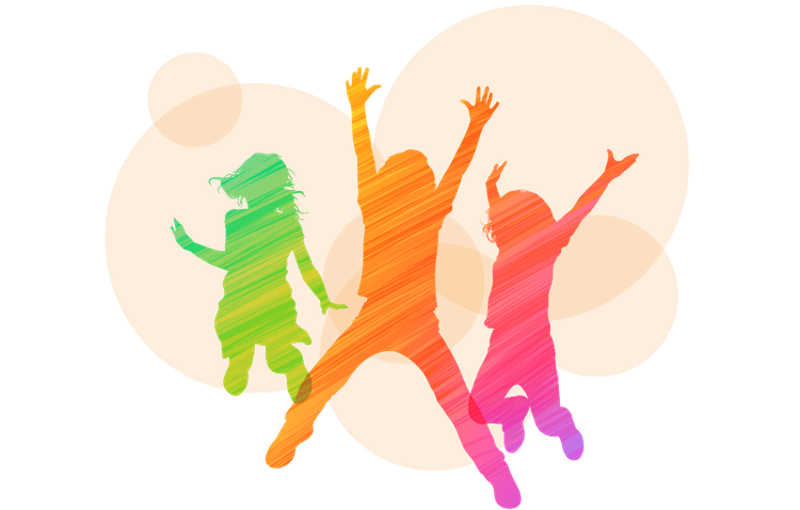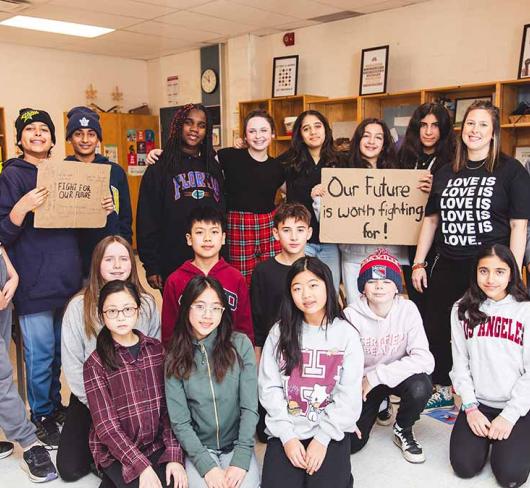
Mental Health and Well-Being in Our Classroom: The Building of a Resource by Teachers for Teachers
Where is Eric?
“Has anyone seen Eric?”* This had become an increasingly common question after recess or lunchtime. Once again, his classroom teacher called the office and asked the principal to look for him. This time Eric was just outside the exit to the yard sitting against the wall with his head buried in his arms. He was not “causing trouble” and didn’t think this was a joke. He had not meant to worry anyone and was not playing a trick on his teacher. The reality is that Eric has severe anxiety and the thought of going back into his classroom that day was just too much for him. The principal invited Eric back into the school and was able to get him into class where he was greeted with compassion and given the space he needed to centre himself. This had not always been the response he received for his behaviour, but now that we knew more about Eric’s mental health challenges, we had put plans in place to address his needs.
What We See in Our Schools
Eric’s story is not unique. Given the current statistics in Canada on child and youth mental health, all of us have a student like Eric in our school and maybe even in our own classroom. Most experts agree that in Canada, 1 in 5 children and youth experience mental health issues. There may be more. As educators, we know there are students in our classrooms struggling with very real concerns and their well-being is at risk. Mental health challenges can manifest in acting out behaviours or can lead children, like Eric, to become withdrawn.
Mental illness seriously interferes with a child’s academic achievement and their ability to form relationships. In our schools, anxiety, behaviour (ADHD or Conduct Disorder) and mood disorders are the most prevalent and are experienced by some of our most struggling students. As frontline workers, we know that the well-being of many of our students is a concern even when there is no diagnosis of mental illness. As you read this I am sure you are thinking about your own class, about the mental health and well-being of the young people you are tasked with educating and, perhaps like me, you are feeling overwhelmed and frustrated.
My Own Journey
As my frustrations grew about how I could meet the needs of the students in my classroom, I embarked on a journey of learning and discovery. I spent three years working towards a Masters of Counselling, with a focus on education and pedagogy. I wanted to learn more about what was happening to the children in my classroom and to understand ways I could impact their ability to be present and learn. When I completed my program, I was eager to get back into my classroom and put some strategies into place.
In an ideal world, I would be surrounded by a team of mental health professionals who could support me and my students. Unfortunately, we are not there yet. We are not counsellors, we are educators. In order to do our jobs, we must be able to create healthy learning conditions in our classrooms and schools. So how do we do this when we know that for so many of our students the challenges are grounded in mental health and well-being difficulties? How do we teach Eric when he isn’t even able to walk into the building?
The Project
In October 2016, ETFO provincial office put out a call for participants for a project that would partner ETFO with School Mental Health Assist (SMH ASSIST) to build and pilot a mental health resource for educators. Many of us answered.
Our goal was to create a resource that included evidence-based strategies designed to promote the development of skills related to relationship building, emotion identification, coping and stress management, executive functioning, self-confidence and identity.
In the first meeting for our working group I found myself in a room of professionals who felt just as passionately as I did about the mental health and well-being of the young people we teach. It was clear that the selection committee had worked diligently to ensure the participants represented a diverse group of educators from rural, northern and urban locals as well as all types of teaching assignments. It was wonderful to learn about each other and why we had been drawn to this work.
As the professionals from SMH ASSIST described the ideas behind the resource we were about to build, it was clear that it would be a guide written by educators for educators to use every day to promote the development of healthy classrooms. They wanted to hear what we were already doing that was working, as well as what we needed more support with. The energy was palpable and all of us left that day feeling valued, with a strong sense that our voices had been heard.
The next step of this project was to actually dig in and start trying out some of the strategies and activities in our own work environments. We were asked to invite a few colleagues to join us in this pilot phase, from February to April 2017, to provide constructive feedback for analysis by SMH ASSIST. Finding willing participants was easy since many of us are looking for ways to reach our students and build in practices that support their mental health and well-being.
The Imapct
As my colleagues and I began to implement some of the practices into our routines there was a bit of a learning curve. One of the activities connected to coping, “An Imaginary Walk,” was difficult for some children to do at first. The idea behind this activity is that as the teacher follows a script describing a journey through a calming space, students sit quietly and build the story in their minds. This activity can support the students in feeling calmer during transitions or prior to a test. One of my colleagues followed a butterfly in the garden script; the students were not very responsive. Instead of giving up she found out what would capture their interest and opted for an under-the-sea theme. Success!
Other strategies were incorporated into our routines seamlessly and really supported the development of our class community. “That’s Me,” an activity from the building relationships category where students share something about themselves with the group, one at a time, was an easy addition to our circle time. When students identify with a statement, they stand up and say, “that’s me.” They continue around the circle until everyone has had an opportunity to contribute. The debrief time that followed this activity really allowed us to understand how important it can be not only to share things in common with one another but also to celebrate our differences and the things that make us unique.
Not every activity we tried was successful. Many of our occasional teacher colleagues had to make adaptations in order for the activities to work. There can be a certain level of risk associated with trying new things and the relationship between the students and teacher is important in taking the risk. There were wonderful moments of insight and reflection for both the students and the educators. Many of us felt empowered and grounded in the use of a resource that had real science behind it. There was also a sense that these activities were not interrupting learning as some pre-packaged programs do. Instead, they were making learning possible, while reducing levels of stress felt by both the educators and the students.
We were learning to slow things down and notice when it was time to take a break in order to continue being effective. The use of activities designed to support relationship building and emotion identification was fun and students wanted more of them. “Emotion Charades,” where students randomly select an emotion card from a basket and act it out for others to guess, was an activity everyone enjoyed and was often requested.
In a few short weeks, we had begun to notice subtle differences. I was getting to know my students better and had a clearer picture of their strengths and needs in terms of their well-being. Our relationships were improving and I could tell that with this increased trust there was more risk-taking and resilience from all of us. Children were using some of the new strategies such as “5 Finger Breathing,” where students trace along their hand, up and down each finger, breathing in as they move up, and exhaling as they move down, both in and out of the classroom to reduce anxiety and improve focus. There was also an increased sense of self-advocacy.
As I reflected on the pilot and how the use of the resource impacted my colleagues, our students and myself I realized that this was going to change lives. This resource had allowed us to engage in important conversations, challenge our own practices and frame our daily work in the context of well-being. Knowing that we had a shared understanding of some of the key strategies and activities to help reduce the stress of our students and ourselves brought a sense of relief and excitement. We acknowledged that this was the beginning of a great tool and were encouraged by the small gains we had made to continue to make space for everyday mental health practices in our classrooms.
The Work Continues
While this very exciting resource is still in development, I think it is important to note that there are some very useful materials already available to educators from ETFO, SMH ASSIST and the Ministry of Education. For example, ETFO members may participate in ETFO workshops (Programming for Students with Special Needs in the Regular Classroom), visit the ETFO website and explore the Well-Being, Mental Health and Disabilities page or view the Well-Being and Mental Health webcast. The SMH ASSIST website (smh-assist.ca) has a lot of information that is directly connected to student mental health and well-being. There is a very easy to follow tutorial on “Creating Mentally Healthy Classrooms,” as well as two new modules that explore anxiety and attention. The website also includes useful checklists, fact sheets and materials to share with parents and colleagues. The Supporting Minds: An Educator’s Guide to Promoting Students’ Mental Health and Well-being and the First Nations Mental Wellness Continuum Framework are two other resources that can support educators in their journey to understanding and supporting mental health and well-being in their classrooms.
Final Thoughts
I have given myself permission to push well-being to the top of my to-do list. I am working towards building a positive classroom environment that is safe and inclusive, working daily to reduce the stigma associated with mental illness. As I build those all-important relationships with my students, I am better able to model appropriate social skills and the “selfies” (awareness, control, and esteem). I feel empowered and know that I am getting closer to having the type of impact I want to have on my students.
Twyla Jackson is a member of the Hastings Prince Edward Teacher Local.

